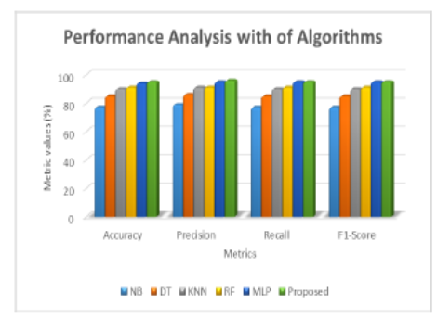


Indian Journal of Science and Technology
Year: 2023, Volume: 16, Issue: 35, Pages: 2856-2867
Original Article
S AshokKumar1*, K P Rajesh2
1Research Scholar, School of Computer Science, Park’s College(Autonomous), Tirupur, Tamil Nadu, India
2Dean, School of Computer Science, Park’s College(Autonomous), Tirupur, Tamil Nadu, India
*Corresponding Author
Email: [email protected]
Received Date:20 April 2023, Accepted Date:07 August 2023, Published Date:19 September 2023
Objectives: To enhance the accuracy of the Human Activity Recognition (HAR) in the computer vision. The study aims to explore the practical applications of HAR in various fields, including gaming, rehabilitation, health monitoring, human-robot interaction, sports, video surveillance, and robotics. The specific objective is to develop a system that can accurately recognize and categorize the human actions thereby enabling the design and implementation of effective human-computer interaction systems. Methods: In this research, a HAR module is developed to extract relevant features such as Accelerometer, Gyroscope and Magnetometer features from signals obtained from IoT wearable sensors. 7352 samples are considered. Machine learning models such as K-Nearest Neighbor Algorithm (KNN), Random Forest Algorithm (RF), Naive Bayes Algorithm (NB), Decision Tree Algorithm (DT), Multi-Layer Perceptron (MLP) Algorithm and Proposed Algorithm (MLP classifier with adam optimizer and relu activation) are employed to automatically recognize and classify activities performed by individuals based on the raw data. The models are trained and evaluated using statistical parameters, including accuracy score, precision, recall, and f1-score. A comparison is made between existing approaches such as KNN, RF, NB, DT and MLP Algorithms and the proposed model to assess its performance. Findings: The study reveals that the proposed model MLP classifier with adam optimizer and relu activation is effective in recognizing and categorizing the human activities with 95% of accuracy. The statistical evaluation metrices demonstrates the reliability and robustness of the proposed model with 96% of precision. Novelty: This research contributes to the field of Human Activity Recognition by presenting a novel approach that combines the IoT wearable sensors, feature extraction, and machine learning models to accurately recognize and classify human actions. The proposed model outperforms the existing methods in terms of accuracy. The study highlights the importance of the proposed algorithm and its potential for improving the human computer interaction systems.
Keywords: Classification; Human Activity; IOT; Machine Learning; Supervised Learning
© 2023 AshokKumar & Rajesh. This is an open-access article distributed under the terms of the Creative Commons Attribution License, which permits unrestricted use, distribution, and reproduction in any medium, provided the original author and source are credited. Published By Indian Society for Education and Environment (iSee)
Subscribe now for latest articles and news.